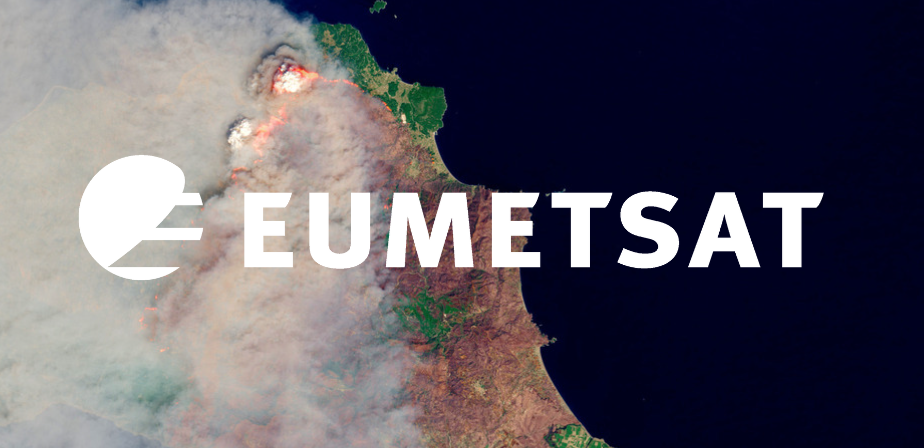Assessing post-fire impacts with next-generation satellites
Contents
Assessing post-fire impacts with next-generation satellites¶
In the near future, new satellites such as Meteosat Third Generation (MTG) and Metop - Second Generation (Metop-SG) will provide advanced capabilities and valuable data for monitoring fires and their impacts. This three-part case study will introduce upcoming data products from MTG and Metop-SG in the context of the summer wildfires which occurred in southern Italy and Greece in early August 2021. In this part, we will introduce you to new capabilities in monitoring the fire life cycle with the upcoming burned area data product from LSA SAF and complementary data from Sentinel-2 to assess burn severity.
The Case Event¶
A long period of warm and dry weather led to fires breaking out across the Mediterranean during the summer of 2021. In the Mediterranean region, the winters are rainy and mild while the summers are hot and dry, leading to vegetation stress and the accumulation of fuels in the summer months.
In Greece, the largest wildfires occurred in Attica, Olympia, Messenia, and Evia (also known as Euboea). The fires in Evia, Greece’s second largest island, were particularly devastating. They led to two deaths and destroyed 125,000 hectares of land.
Southern Italy and Sicily were particularly impacted by wildfires. In Calabria, fires restarted in early August in the Aspromonte Mountain around the San Luca Valley, threatening ancient and primaeval beech forests (Faggete vetuste) that are recognised as a UNESCO World Heritage site.
EUMETSAT Polar System - Second Generation (EPS-SG)¶
The EPS-SG is a partnership programme, which involves the European Space Agency, the German Aerospace Agency and the National Center for Space Studies. The mission is composed of two series of spacecraft, Metop-SG A and B, flying on the same mid-morning orbit, like the current Metop satellites. The orbit height is in the range 823-848 km (dependent on latitudes). There will be three satellites each of Metop-SG A and Metop-SG B. The first two satellites Metop-SG A1 and Metop-SG B1 are planned to be launched in Q2 and Q4 2024 respectively. See here an overview of the planned launch dates.
Consisting of low earth orbiting satellites, Metop-SG will provide high spatial resolution imagery and data. However, they will only cover a smaller observation region and have a longer revisit period compared to geostationary satellites like MTG.
In this case study, we will be focusing on data Metop-SG’s METimage radiometer. We will also be using data from the Sentinel-2 MultiSpectral Instrument to assess burn severity. While data from Metop-SG is not yet available, we will be using proxy data from existing instruments to demonstrate the new capabilities that will arise from these satellites.
What is proxy data?
Proxy data refers to “data with valid scientific content, to be used in early training on instrument capabilities and application areas, for example in test beds. These are real datasets from relevant existing precursor instruments.” (Source: EUMETSAT)
Monitoring the fire life cycle consists of three stages: (1) pre-fire, (2) active fire and (3) post-fire. First, we can assess pre-fire risk based on meteorological and vegetation conditions. During the fire, we can detect and monitor the location of active fires as well as smoke being produced by the fires. Finally, after the fires have been extinguished, the burned area and burn severity can be assessed.
EPS-SG METimage¶
Burn Area Mapping¶
METimage will provide the capability to produce high resolution burn area mapping for post-fire impact assessment. Figure 1 shows burned areas coloured by the ordinal day (the day of the year) that it burned on. The proxy data source is MODIS, which like METimage, has a spatial resolution of 500m. The MODIS Burned Area Monthly Level 3 (MCD64A1) product shows the ordinal day of burn in August 2021. Figure 1 shows burned areas coloured by the ordinal day (the day of the year) that it burned on. As shown by the red and orange areas in the figure, there were a number of fires that broke out in early August. In particular, the largest burn area this month can be detected on the Greek island of Evia.
METimage is a multi-spectral (visible and IR) imaging passive radiometer which will provide detailed information on clouds, wind, aerosols and surface properties which are essential for meteorological and climate applications. Compared to its predecessor AVHRR, METimage will have many more channels for the benefit of measuring far more geophysical variables. This combined with on-board radiometric calibration of solar channels and the enhanced spatial sampling (500m compared to 1km at nadir) will provide a breakthrough in several application areas: numerical weather forecast, very short-range forecast and now-casting, oceanography, hydrology, land-surface applications, and climate monitoring.
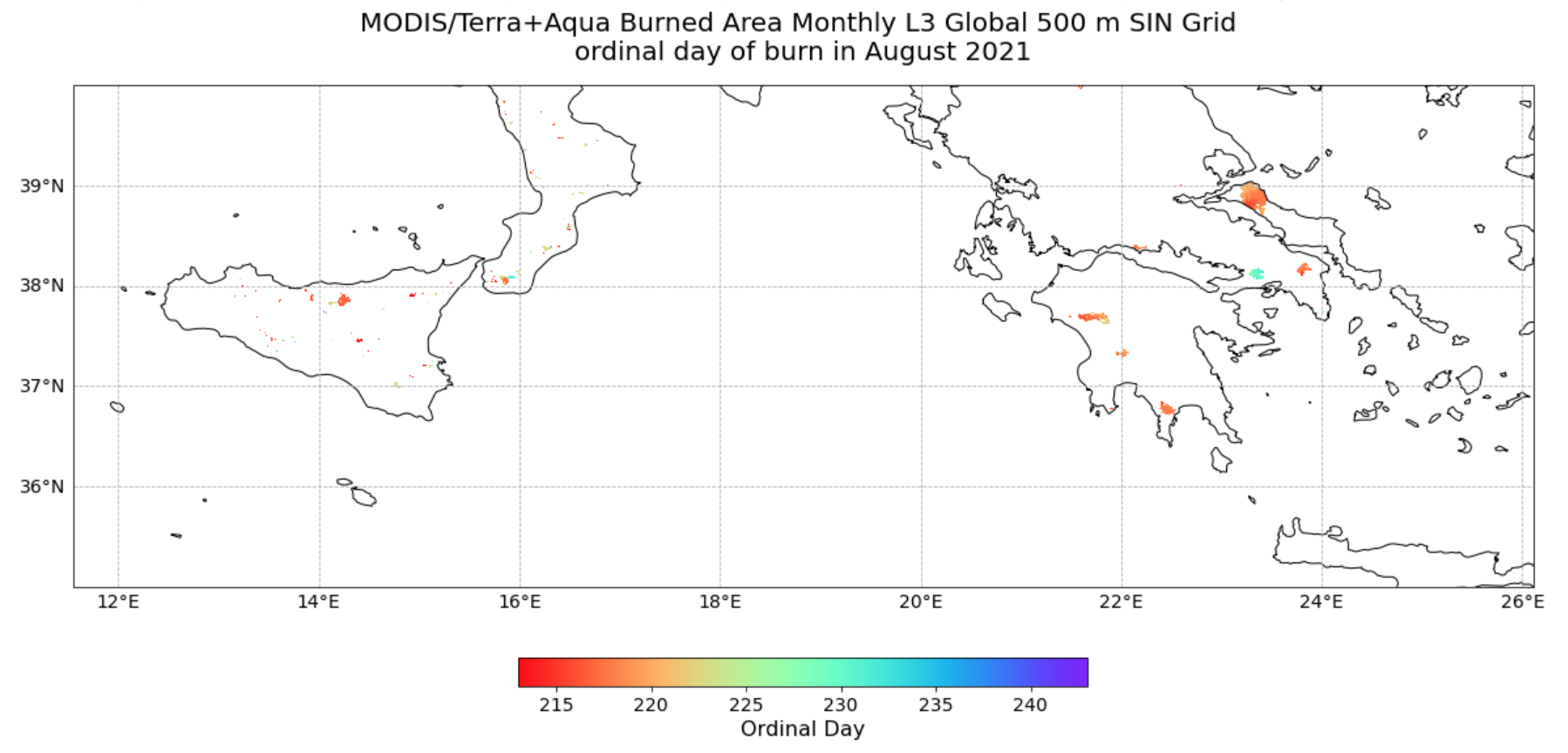
Figure 1. Burned areas in Greece and Italy coloured by the ordinal day of burn in August 2021, from MODIS Burned Area Monthly Level 3 product.
Learn how this burned area figure showing ordinal day of burn was made.
Sentinel-2¶
Data from Sentinel-2 is especially useful for assessing burn severity due to its high spatial resolution of up to 10m. This makes it a useful complementary dataset to the data from MTG and Metop-SG. We will now demonstrate several ways that data from Sentinel-2 can be used, including the creation of composite imagery, calculation of a burn index and burn severity mapping.
The Copernicus Sentinel-2 mission comprises a constellation of two polar-orbiting satellites placed in the same sun-synchronous orbit, phased at 180° to each other. It aims at monitoring variability in land surface conditions, and its wide swath width (290 km) and high revisit time (10 days at the equator with one satellite, and 5 days with 2 satellites under cloud-free conditions which results in 2-3 days at mid-latitudes) will support monitoring of Earth’s surface changes.
Sentinel-2 MultiSpectral Instrument¶
The Sentinel-2 MultiSpectral Instrument (MSI) has 13 spectral bands which provide data for land cover/change classification, atmospheric correction and cloud/snow separation. The MSI samples four bands at 10 m, six bands at 20 m and three bands at 60 m spatial resolution. Due to the high spatial resolution of up to 10m, the Sentinel-2 MSI data is useful for creating image composites. MSI data products include top-of-atmosphere reflectances (Level 1C data) and bottom-of-atmosphere reflectances (Level 2A data).
Natural colour composites¶
Natural colour composites are similar to what the human eye would see. To create a natural colour composite, one can assign the red, green and blue channels of image to show the corresponding visible red, visible green and visible blue bands of the satellite data. Figure 2 shows natural colour composites from Sentinel-2 Level 2A data on two dates. The left image was taken before the fires on 1 August 2021 and the image on the right was taken after the fires were extinguished on 25 September 2021. The island on the bottom-right corner of the image is the Greek island of Evia.
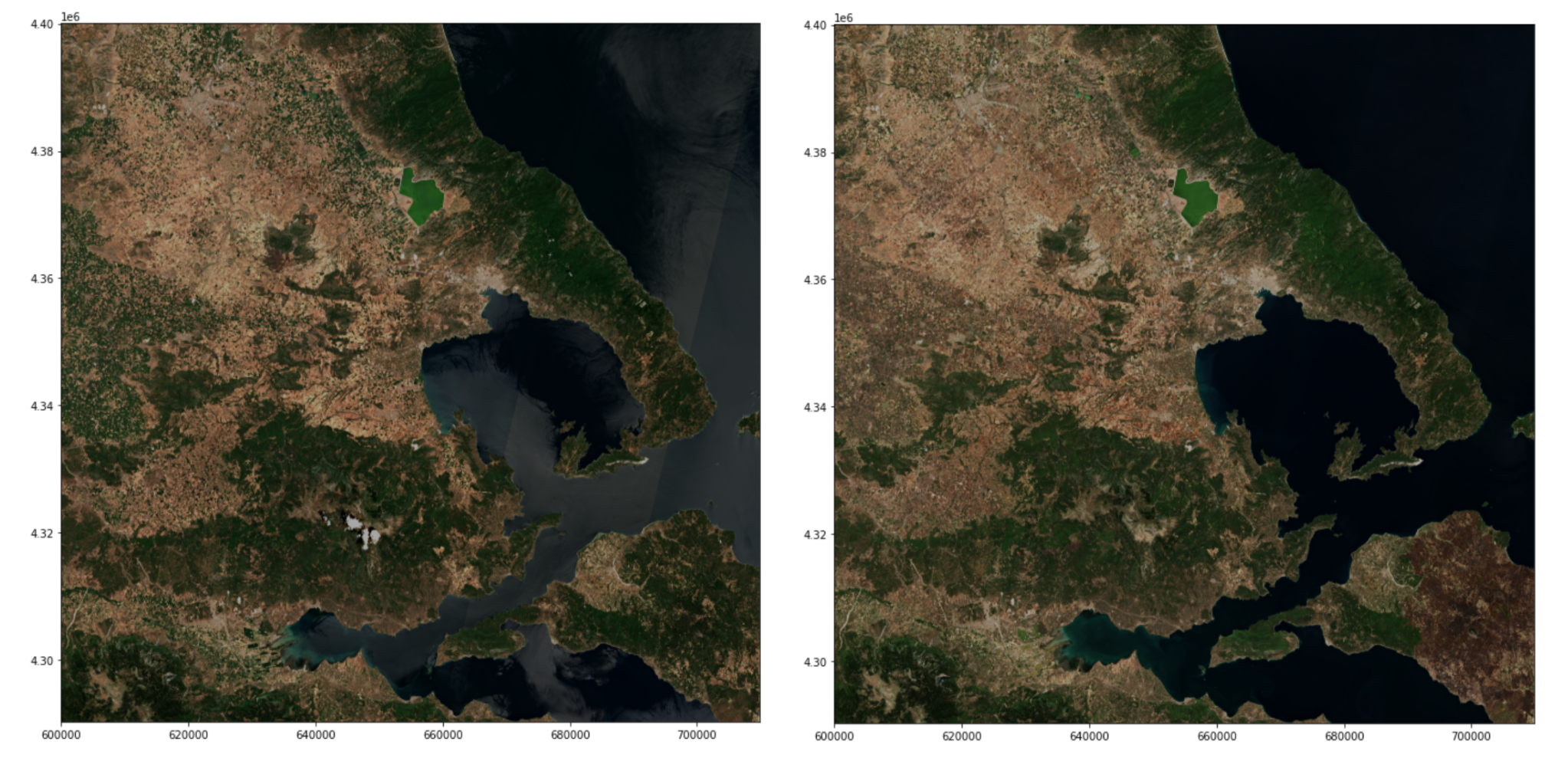
Figure 2. Natural colour composites from Sentinel-2 Level 2A data showing pre-fire conditions on 1 August 2021 (left) and post-fire conditions on 25 September 2021 (right) in Greece.
Learn how these Natural colour composites were made.
False colour composites¶
The burn scars from the fires are not easily seen in the natural colour images in Figure 2. However, we can also create a false colour composite that makes burn scars more easily distinguishable. The recipe for the false colour composites is: Red-Green-Blue 12-8A-2. This means that the red channel was assigned to band 12 (shortwave infrared), the green channel was assigned to band 8A (near-infrared) and the blue channel was assigned to band 2 (the visible blue band). This recipe highlights burn scars in brown and healthy vegetation in green.
Figure 3 shows two false colour composites created from the Sentinel-2 MSI data captured on the same dates as before. The left image was taken before the fires on 1 August 2021 and the image on the right was taken after the fires were extinguished on 25 September 2021. In the false colour composite from September 2021, a large brown burn scar on Evia Island is clearly visible. This is the same burn scar you can see in Figure 1.
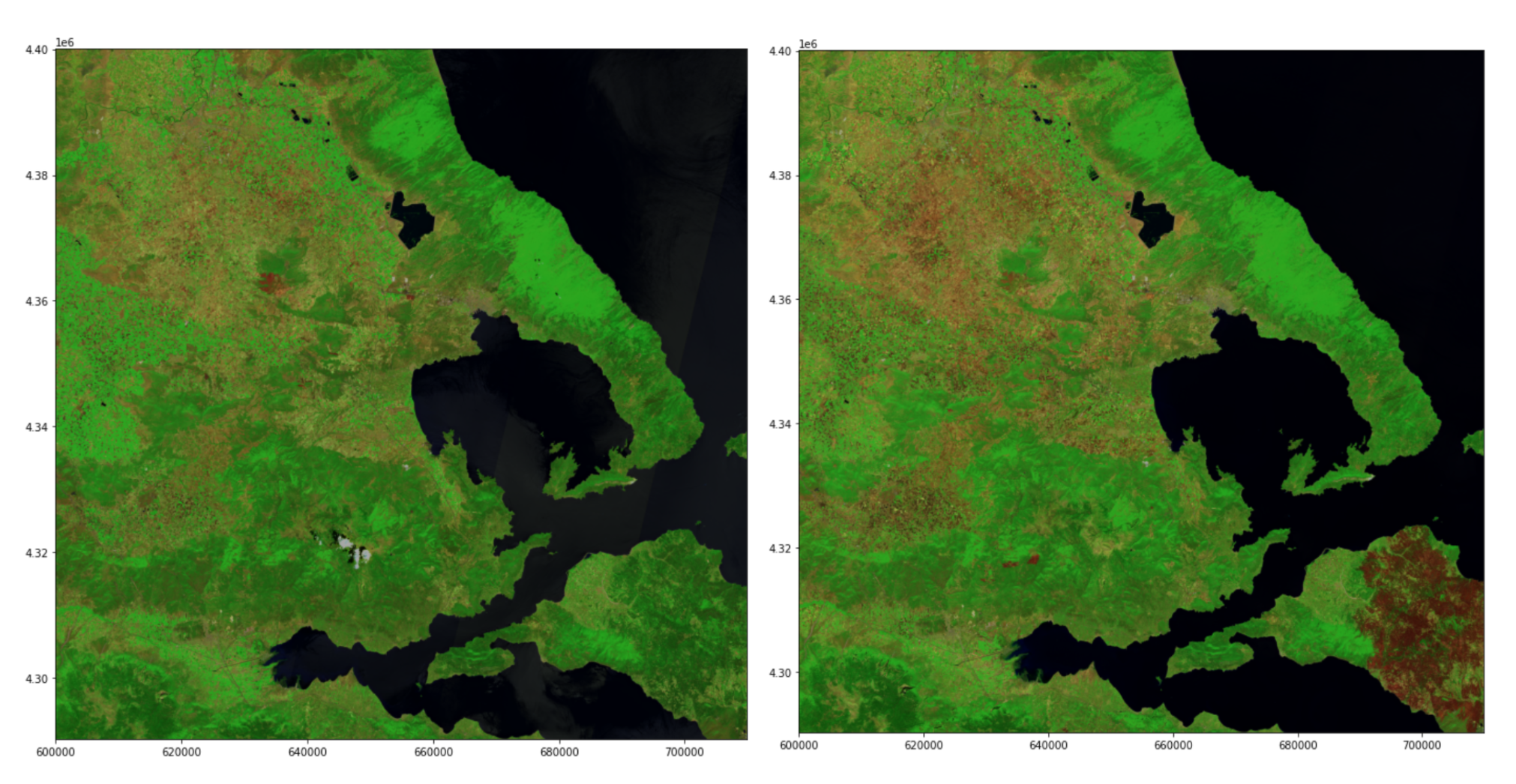
Figure 3. False colour composites from Sentinel-2 Level 2A data showing pre-fire conditions on 1 August 2021 (left) and post-fire conditions on 25 September 2021 (right) in Greece.
Learn how these False colour composites were made.
Normalised Burn Ratio (NBR)¶
In order to assess burn severity, we can calculate the Normalised Burn Ratio (NBR). As explained by UN SPIDER, the NBR “uses near-infrared (NIR) and shortwave-infrared (SWIR) wavelengths. Healthy vegetation before the fire has very high NIR reflectance and a low SWIR response. In contrast, recently burned areas have a low reflectance in the NIR and high reflectance in the SWIR band.” The formula is NBR = (NIR - SWIR) / (NIR + SWIR) or using the MSI band numbers: NBR = (B8A - B12) / (B8A + B12).
Next, “The NBR is calculated for images before the fire (pre-fire NBR) and for images after the fire (post-fire NBR) and the post-fire image is subtracted from the pre-fire image to create the differenced (or delta) NBR (dNBR) image. dNBR can be used for burn severity assessment, as areas with higher dNBR values indicate more severe damage whereas areas with negative dNBR values might show increased vegetation productivity. dNBR can be classified according to burn severity ranges proposed by the United States Geological Survey (USGS).”
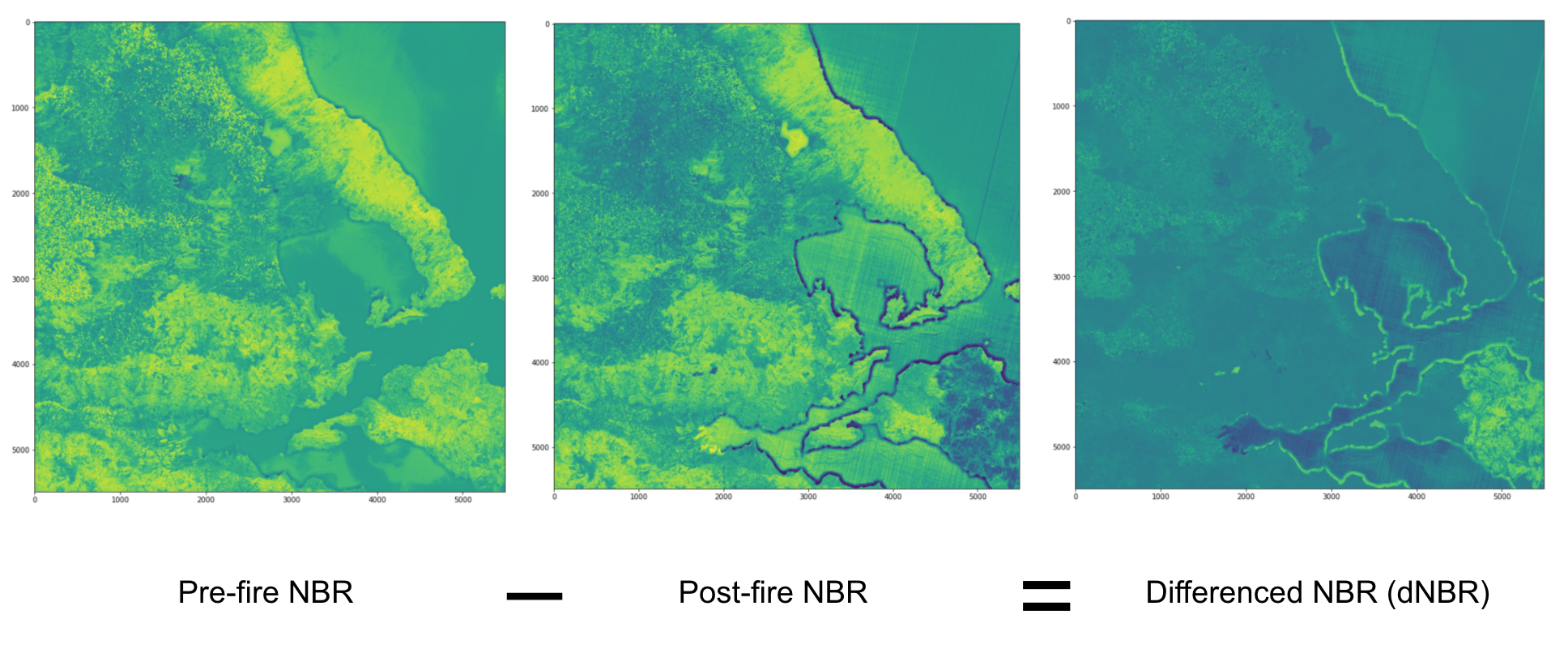
Figure 4. The Differenced Normalised Burn Ratio (dNBR) image (right) is calculated from Sentinel-2 Level 2A data by subtracting the pre-fire NBR on 1 August 2021 (left) from the post-fire NBR on 25 September 2021 (middle).
Learn how the Normalized Burn Ratio (NBR) and Differenced NBR images were made.
Burn Severity Map¶
As shown in Figure 5, dNBR can be classified according to burn severity ranges proposed by the USGS. The water bodies are also masked using the water mask from the Sentinel-2 data’s scene classification layer. The burn scar on Evia Island has been classified as having areas with both high and moderate-high severity burns.
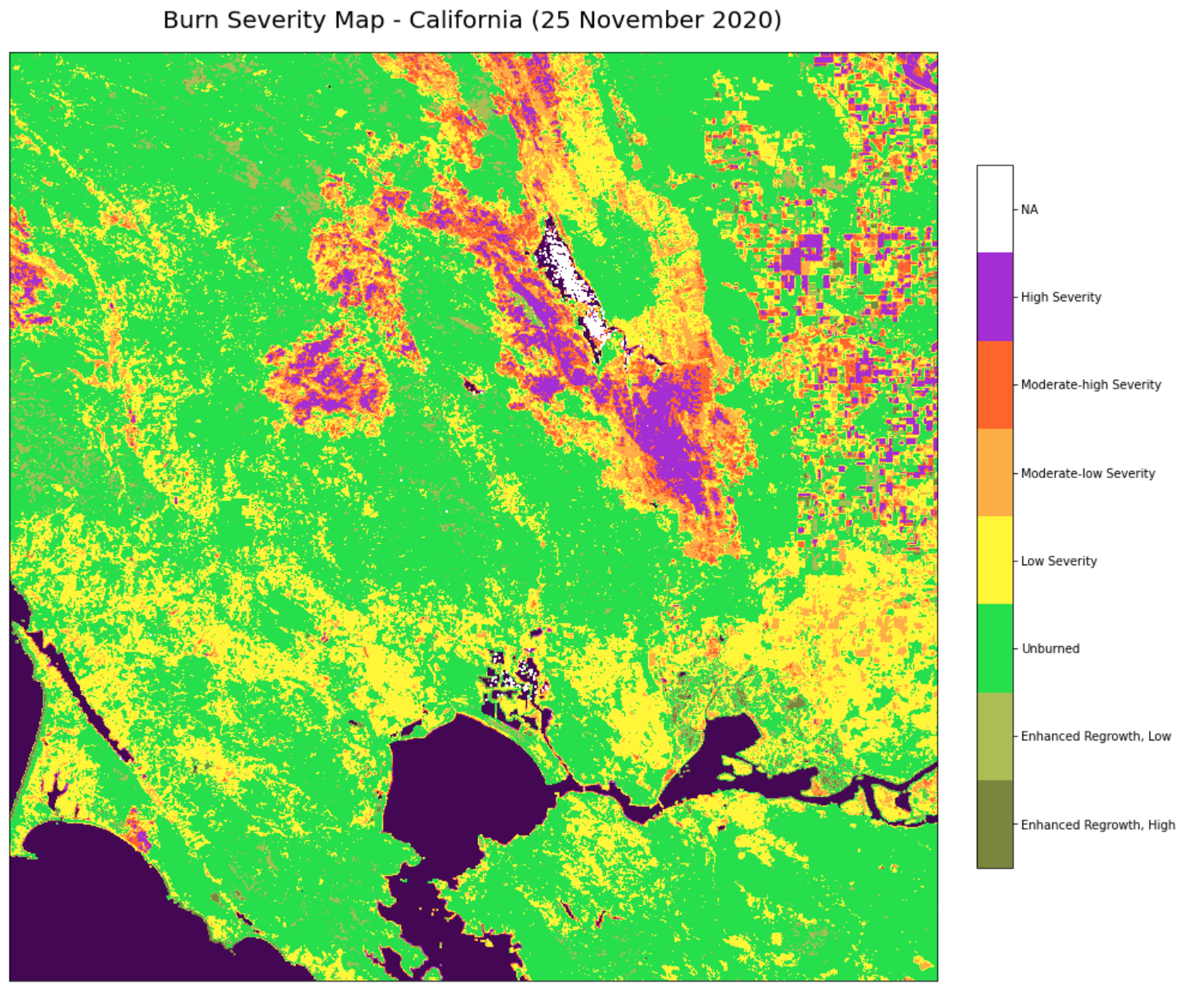
Figure 5. Burn severity in Greece is classified using the dNBR image shown in Figure 4. The coastal water bodies are masked using the water mask from the Sentinel-2 data’s scene classification layer.
Learn how this Burn Severity Map was made.
References¶
Giglio, L., Justice, C., Boschetti, L., Roy, D. (2021). MODIS/Terra+Aqua Burned Area Monthly L3 Global 500m SIN Grid V061 [Data set]. NASA EOSDIS Land Processes DAAC. https://doi.org/10.5067/MODIS/MCD64A1.061
Copernicus Sentinel data 2021
